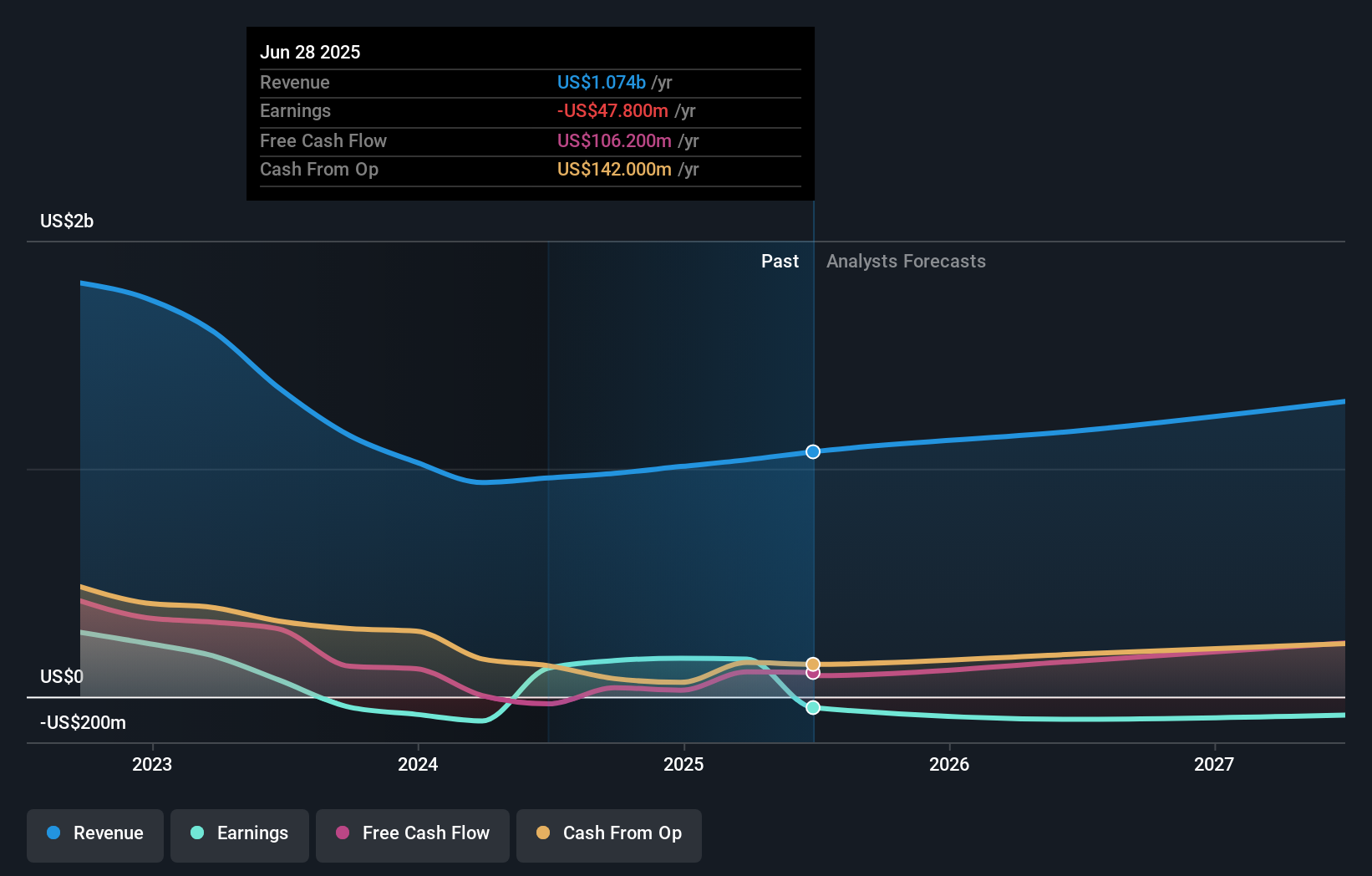

Investors in Synaptics Incorporated (NASDAQ:SYNA) had a good week, as its shares rose 5.0% to close at US$63.52 following the release of its full-year results. It looks like the results were pretty good overall. While revenues of US$1.1b were in line with analyst predictions, statutory losses were much smaller than expected, with Synaptics losing US$1.22 per share. Following the result, the analysts have updated their earnings model, and it would be good to know whether they think there's been a strong change in the company's prospects, or if it's business as usual. Readers will be glad to know we've aggregated the latest statutory forecasts to see whether the analysts have changed their mind on Synaptics after the latest results.

Taking into account the latest results, the most recent consensus for Synaptics from nine analysts is for revenues of US$1.17b in 2026. If met, it would imply a solid 8.6% increase on its revenue over the past 12 months. Per-share losses are expected to explode, reaching US$2.58 per share. Yet prior to the latest earnings, the analysts had been forecasting revenues of US$1.17b and losses of US$2.21 per share in 2026. So it's pretty clear the analysts have mixed opinions on Synaptics even after this update; although they reconfirmed their revenue numbers, it came at the cost of a noticeable increase in per-share losses.
Check out our latest analysis for Synaptics
As a result, there was no major change to the consensus price target of US$82.86, with the analysts implicitly confirming that the business looks to be performing in line with expectations, despite higher forecast losses. It could also be instructive to look at the range of analyst estimates, to evaluate how different the outlier opinions are from the mean. There are some variant perceptions on Synaptics, with the most bullish analyst valuing it at US$95.00 and the most bearish at US$65.00 per share. As you can see, analysts are not all in agreement on the stock's future, but the range of estimates is still reasonably narrow, which could suggest that the outcome is not totally unpredictable.
Taking a look at the bigger picture now, one of the ways we can understand these forecasts is to see how they compare to both past performance and industry growth estimates. One thing stands out from these estimates, which is that Synaptics is forecast to grow faster in the future than it has in the past, with revenues expected to display 8.6% annualised growth until the end of 2026. If achieved, this would be a much better result than the 7.2% annual decline over the past five years. Compare this against analyst estimates for the broader industry, which suggest that (in aggregate) industry revenues are expected to grow 17% annually for the foreseeable future. Although Synaptics' revenues are expected to improve, it seems that the analysts are still bearish on the business, forecasting it to grow slower than the broader industry.
The Bottom Line
The most important thing to take away is that the analysts increased their loss per share estimates for next year. Fortunately, the analysts also reconfirmed their revenue estimates, suggesting that it's tracking in line with expectations. Although our data does suggest that Synaptics' revenue is expected to perform worse than the wider industry. The consensus price target held steady at US$82.86, with the latest estimates not enough to have an impact on their price targets.
Following on from that line of thought, we think that the long-term prospects of the business are much more relevant than next year's earnings. At Simply Wall St, we have a full range of analyst estimates for Synaptics going out to 2027, and you can see them free on our platform here..
We don't want to rain on the parade too much, but we did also find 1 warning sign for Synaptics that you need to be mindful of.
Have feedback on this article? Concerned about the content? Get in touch with us directly. Alternatively, email editorial-team (at) simplywallst.com.
This article by Simply Wall St is general in nature. We provide commentary based on historical data and analyst forecasts only using an unbiased methodology and our articles are not intended to be financial advice. It does not constitute a recommendation to buy or sell any stock, and does not take account of your objectives, or your financial situation. We aim to bring you long-term focused analysis driven by fundamental data. Note that our analysis may not factor in the latest price-sensitive company announcements or qualitative material. Simply Wall St has no position in any stocks mentioned.